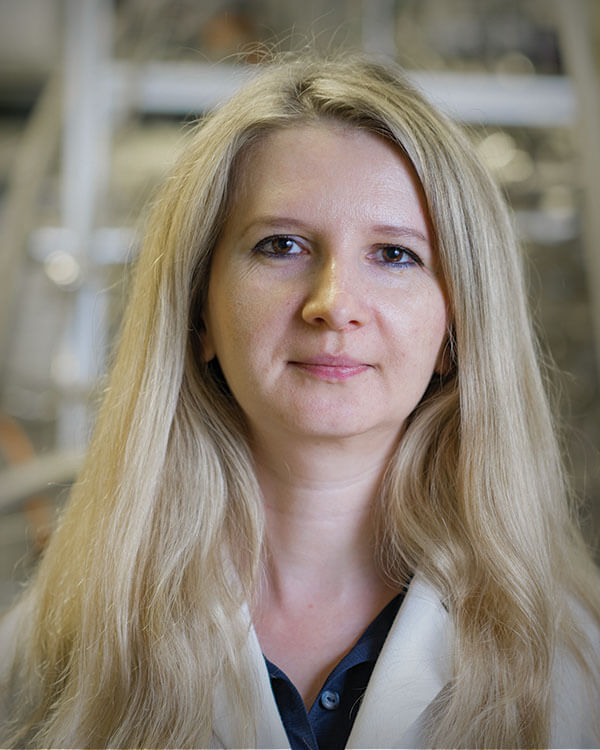Sylwia Ptasinska

Professor of Physics
Contact
311 Nieuwland Science Hall
sptasins@nd.edu
574-631-1846
http://www3.nd.edu/~sptasins/
Research Cluster
Our interdisciplinary experimental group focuses on two areas of biophysical research: 1) atmospheric pressure plasma jet induced physics and chemistry in biological systems, and 2) effects of low energy electrons on biomolecules: isolated and embedded into microsolvents.
The first research direction is the introduction of low-energy plasma radiation to bring a new dimension to the existing radiation biochemistry. Our initial efforts focused on the development of several atmospheric pressure plasma jet (APPJ) sources and the detailed characterization and the full exploitation of their biocatalytic effect. Simultaneously to this effort, we also apply the constructed sources to biological cell irradiation. Research into cancer cell irradiation by a cold plasma started ca. 2010, when it was hypothesized that the plasma can activate cell apoptosis, i.e., events that lead to specific changes in cell morphology, which may eventually lead to cell death, in sharp contrast to necrosis, which happens immediately following some events.
The main aim of the second program is to provide a comprehensive understanding of dissociative electron attachment (DEA) to gas-phase molecules, primarily biomolecules, with implications of this process for DNA fragmentation and radical formation responsible for cell damage. We conduct an experimental study of gas-phase DEA measurements of compounds, which includes the peptide bond linkage, to gain a better understanding of the effects of ionizing radiation on amino acid, peptide, and protein structures. These compounds can serve as model peptides; thus, they were selected as the first molecules to be investigated in the frame of our newly-constructed, high-resolution, DEA-specialized chamber. Definitively establishing molecular fragmentation patterns is of high importance for many areas of basic and applied science dealing with electron donor-acceptor interactions. Therefore, our data provide valuable information to support the computationally-determined reaction pathways, which are useful to radiation therapy, radiodiagnostic, radiation protection, and biochemical modeling.
Publications
- "Large-Scale Image Analysis for Investigating Spatio-Temporal Changes in Nuclear DNA Damage Caused by Nitrogen Atmospheric Pressure Plasma Jets" Han, X.; Kapaldo, J.; Liu, Y.; Stack, M.S.; Alizadeh, E.; Ptasinska, S. Int. J. Mol. Sci. 2020, 21(11), 4127.
- "Shielding‐gas‐controlled atmospheric pressure plasma jets: Optical emission, reactive oxygen species, and the effect on cancer cells" Kapaldo, J.; Han, X.; Ptasinska, S. Plasma Process. Polym. 2019, 16(5), 1800169.
- "Dipole-Supported Electronic Resonances Mediate Electron-Induced Amide Bond Cleavage" Li, Z.; Ryszka, M.; Dawley, M.M.; Carmichael, I.; Bravaya, K.B.; Ptasińska, S. Phys. Rev. Lett. 2019, 122(7), 073002.
- "Total yield of reactive species originating from an atmospheric pressure plasma jet in real time" Adhikari, E.R.; Samara, V.; Ptasińska, S. Biol. Chem. 2019, 400(1), 93-100.